Do Goldendoodles Change Colors? Unravel the Mystery!
Goldendoodles are currently one of the most popular hybrid dog breeds, and one of the reasons for this is their beautiful and dynamic range of coat colors.
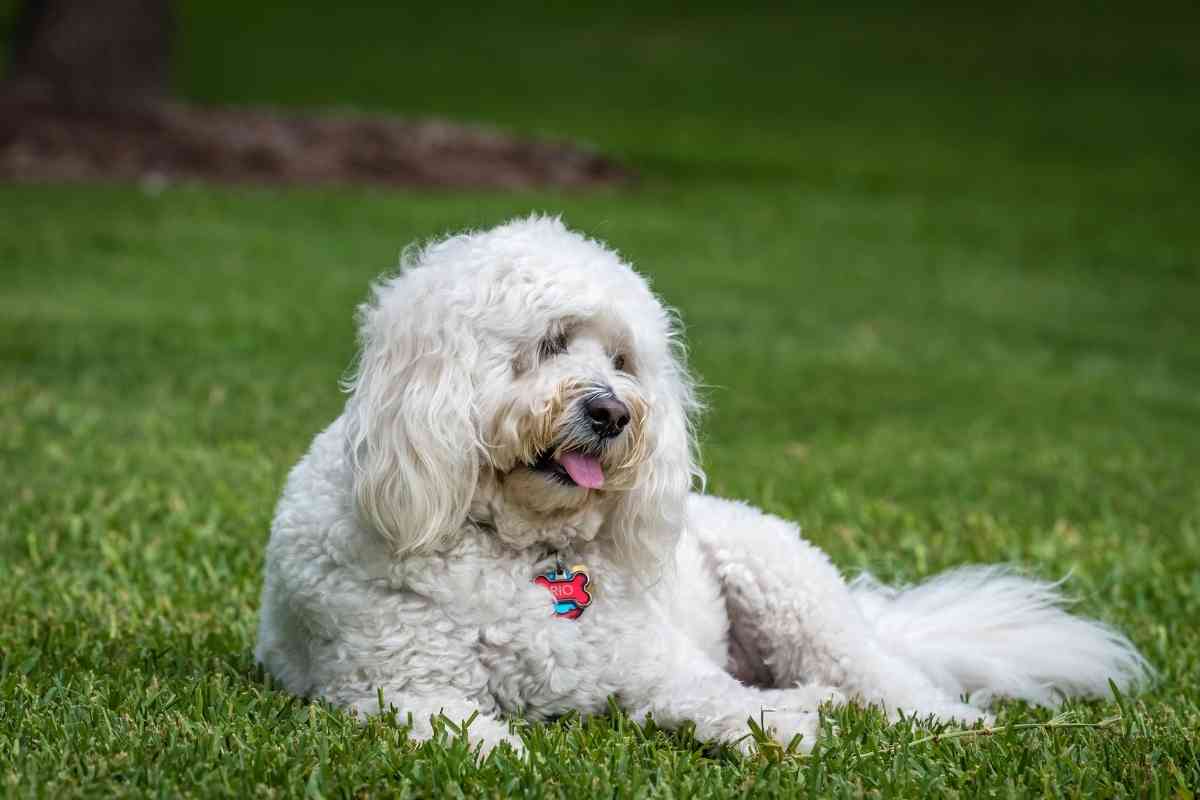
Do Goldendoodles Change Color?
Yes, most Goldendoodles will change color as they get older. This is due to a natural process called ‘Progressive Graying,’ which is a characteristic the Goldendoodles inherited from their Poodle genes. Most Goldendoodles’ coats will begin to change color when they are 5 to 8 months old.
After extensively researching Goldendoodles, I have gathered enough information to determine if this breed changes color. My research has indicated that virtually all Goldendoodles will change their color, but this can vary depending on the genetic makeup of the dog.
Will My Goldendoodle’s Coat Change Color?
When many aspiring Goldendoodle owners speak to breeders, a key characteristic that they prioritize is the color of their pup’s coat.
Goldendoodles are a unique hybrid breed that combines the best qualities of both the Poodle and the Golden Retriever.
If you are concerned about your Goldendoodle’s coat, the odds are the color will change eventually. Virtually all Goldendoodles change their color, and this is a completely natural process for this breed.
How much or how little the color changes can vary significantly depending on the Goldendoodle and its genetic background.
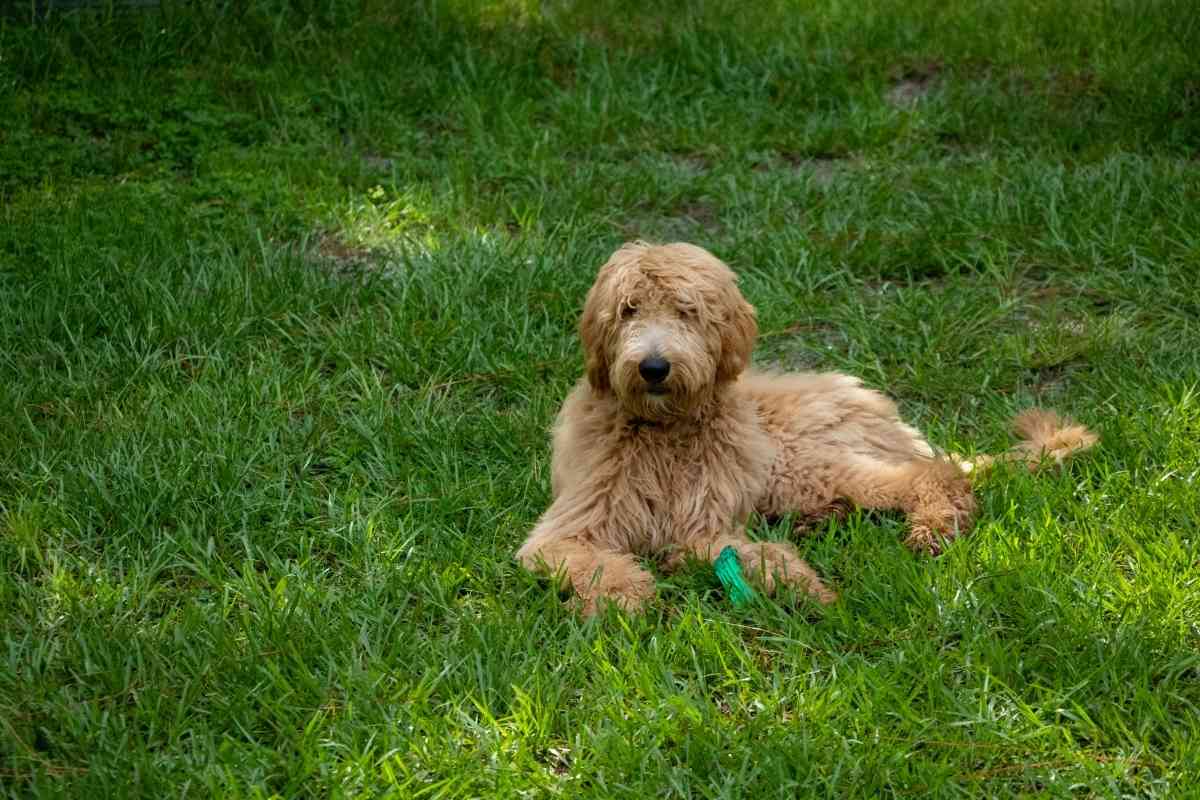
Why Do Goldendodole Coats Change Color?
The expansive color variety that you can find in Goldendoodle coats is mostly influenced by the Poodle genes. Poodles come in a number of different colors, and depending on the color of the Poodle that was used in the breeding process, this will likely affect the coat of your Goldendoodle.
With that said, not only do Poodles have dynamic coat colors, but their hair is also known for changing color over time.
As Poodles get older, their coats will often become lighter and less vibrant than in their puppy years. This is due to ‘Progressive Graying’, a genetic characteristic common in Poodles and Goldendoodles.
The bottom line is that if you have your heart set on a specific coat color for your Goldendoodle, you should expect it to change over time.
The ‘Progressive Graying’ of a Goldendoodle’s coat is a natural process, and it usually results in the color becoming more faded.
Genetic Factors Influencing Coat Color
As an experienced Mini Goldendoodle owner, Lexie’s fur developed from a medium creamy shade to a lighter cream hue as she matured.
The primary influence behind a Goldendoodle’s coat color change lies in its genetic makeup. These dogs inherit the ‘Progressive Graying’ gene from their Poodle ancestry. The gene causes the coat color to lighten or darken as they age, and every Goldendoodle experiences this uniquely.
- Dominant & Recessive Genes: A combination of the Poodle’s and Golden Retriever’s genes, including dominant (B) for black and recessive (b) for brown, determine the initial coat color.
- Phantom & Parti Factors: Some Goldendoodles carry patterns like phantom or parti, which can also affect how their color appears over time.
When Do Goldendoodle Coats Change Color?
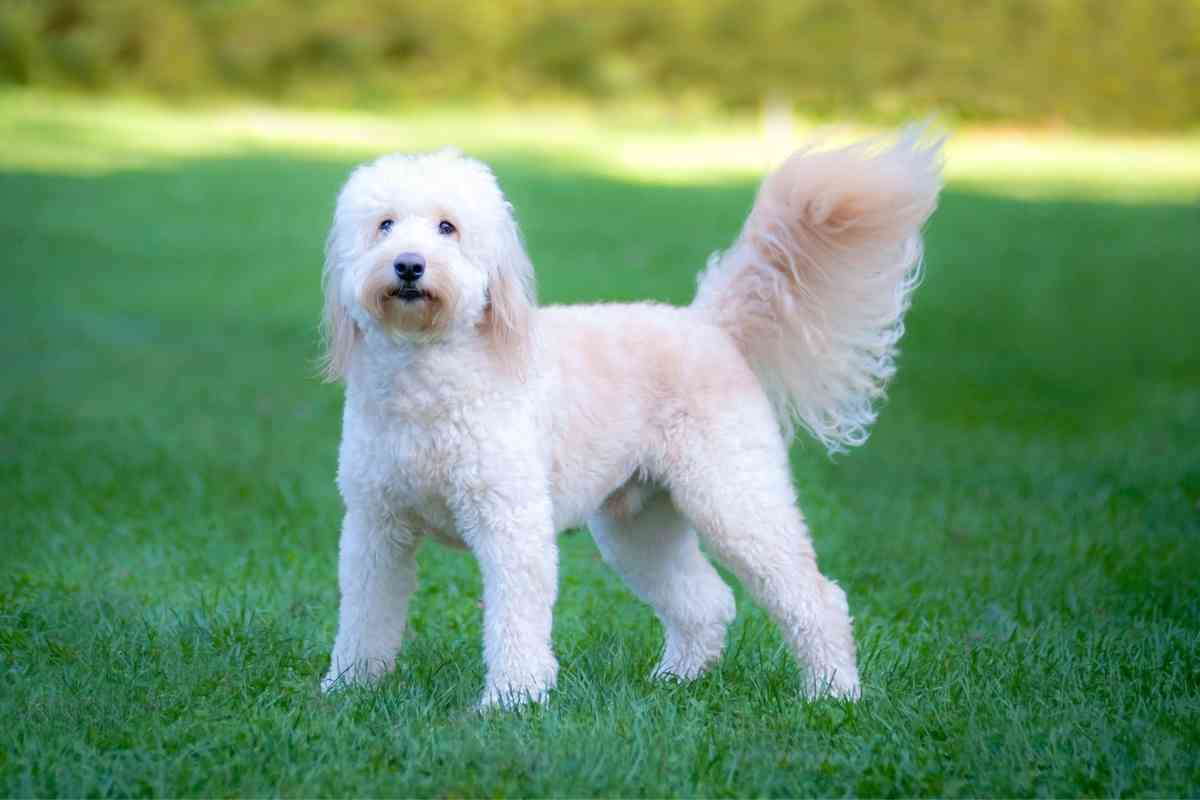
The vibrant shades of a Goldendoodle’s coat are irresistible and eye-catching, to say the least. Unfortunately for many Goldendoodle owners, that bright and animated coat color is often short-lived.
Most Goldendoodles only have vibrant-colored coats during their early puppy years.
How quickly the color will start to fade can be hard to determine, but for many Goldendoodles, the coat will change at around 5 to 8 months.
However, there is no guarantee that the color of your Goldendoodle will change at this time.
Many pet owners adopt Goldendoodles and their pups retain the sharpness of their coat color for years.
Goldendoodle Puppy Coat vs. Adult Coat Transition
Lexie’s puppy coat was incredibly soft, but I noticed it starting to shed and thicken around nine months old. A Goldendoodle’s puppy fur is naturally softer and differs in texture from their adult coat.
The transition typically begins around the 5-8 month mark (as stated above) and can continue up to a year. During this time, the puppy coat sheds, and the adult coat, which is denser and stiffer, comes in. This is when most owners notice a significant coat color change, influenced by the underlying adult fur’s color and texture.
- Puppy Coat: Uniform, soft fur that is the first to grow after birth.
- Adult Coat: Develops around 6-12 months, often with a change in color and texture from the original puppy fur.
Through Lexie, I’ve learned that these transformations are natural and vary from dog to dog. The beauty of a Goldendoodle’s changing coat is just another intriguing aspect of this delightful breed.
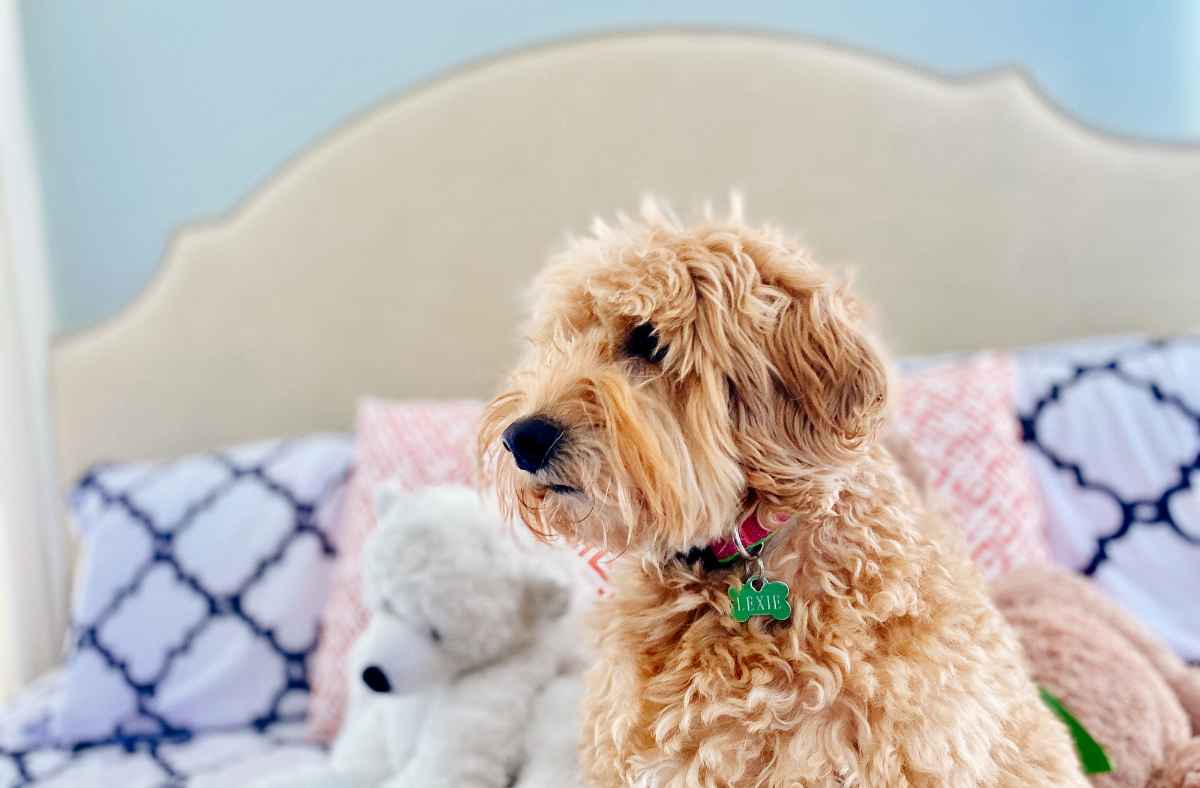
Common Patterns from Puppyhood to Adulthood
Throughout the puppy stage, Goldendoodle puppies can exhibit significant color transformations. It’s not uncommon for a puppy’s coat to darken or lighten as they mature into their adult fur.
Influences of Parent Breeds on Color
The diverse palette of Goldendoodle coat colors can be attributed to their goldendoodle parent breeds: the Golden Retriever and the Poodle.
For example, Lexie’s father was a white mini Poodle, and her mother was a medium-cream Golden Retriever. These breeds contribute to the range of hues seen in Goldendoodle puppies, including cream, red, gold, and sometimes even phantom or parti colors.
It’s fascinating how genetics play a role in the color outcome of Goldendoodles, resulting in a unique and often unpredictable array of beautiful coats.
Do All Goldendoodles Change Color?
Just about all Goldendoodles will change color as they get older.
This is a natural part of their coat’s development, and you should expect your pup’s color to change eventually.
With that said, that does not mean that every Goldendoodle will change color. Some pups are less likely to lose their vibrant coats as they transition into adulthood, but this is by no means guaranteed.
Can You Preserve the Color of a Goldendoodle Coat?
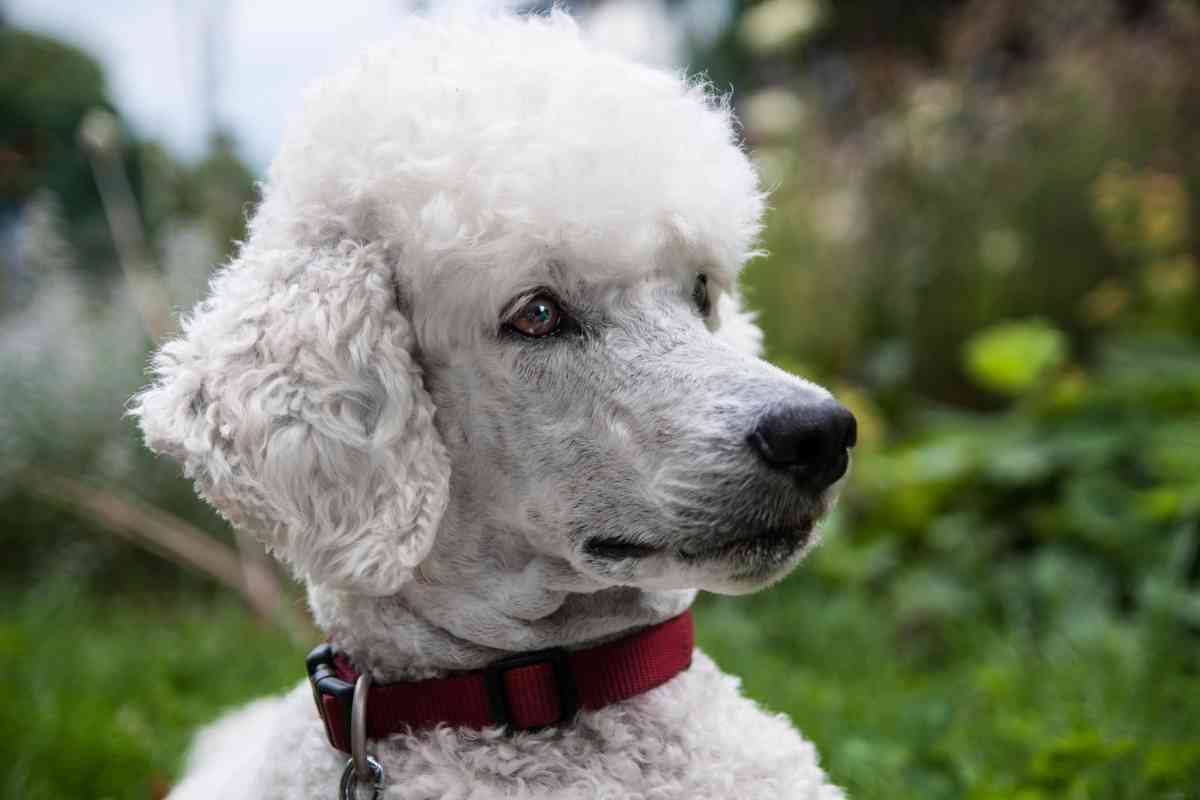
In most cases, preserving the color of a Goldendoodle’s coat is out of your hands. Color changes in a Goldendoodle’s coat are natural, and it’s something that most owners need to expect when they adopt their pup.
You can do a lot to keep your Goldendoodle’s coat healthy by properly maintaining it, but color changes are ultimately inevitable to a certain extent.
However, the chances of a Goldendoodle’s coat retaining its color are much more likely if you buy a ‘True’ Goldendoodle.
Given that the breeding process influences the coat color of a Goldendoodle more than anything, you need to consider the pup’s ancestral background when gauging the color of its coat.
If you want to adopt a Goldendoodle that will keep its color, consider a True Goldendoodle that was bred with the same color parents.
For example, if you adopt a blue Goldendoodle, and the pup was bred with parents which both had blue coats, the chances of the dog retaining its blue color over the years will be considerably higher.
While this is not always guaranteed, it does increase the likelihood that the color will not alter.
This kind of request often requires a specialized breeder that has a very close connection to the ancestry of their pups.
How to Determine the Adult Coat Color of a Goldendoodle Puppy
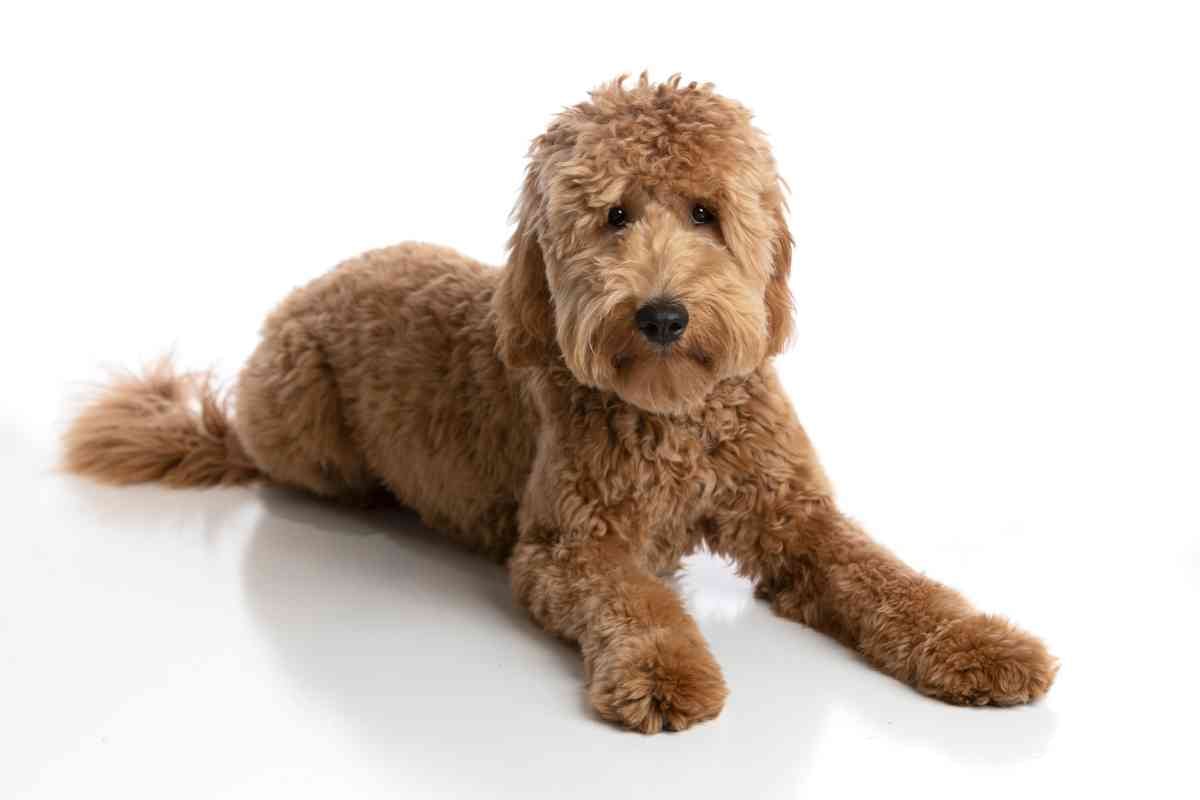
As I’ve mentioned, genetics can often be unpredictable, and you have to accept that certain characteristics of your Goldendoodle’s coat are simply out of your hands.
This can be frustrating for some aspiring Goldendoodle owners to discover, as so many people are sold on the idea of having a unique colored pup.
The million-dollar question that most people ask is ‘what will my Goldendoodle’s coat look like when it becomes an adult?’.
The truth is that this can be very difficult to determine, and you should keep in mind that most Goldendoodles will change color over time.
With that said, there are some ways that you can get an idea of what color Goldendoodle your puppy will be as an adult.
Work With a Quality Breeder
Goldendoodles are a unique hybrid breed, which is why I always recommend working with a quality breeder when you want a guaranteed healthy and happy pup.
Designer dogs like Goldendoodles require a specialized touch, especially when it comes to determining the coat color of the dog.
As Goldendoodles continue to become more and more popular, the demand for unique colored coats is on the rise. It’s not very often that you see a red or blue colored dog, which has created quite a bit of hype around Goldendoodles.
If you want to buy a Goldendoodle puppy that will have an increased chance of retaining its original coat color, you need to work with a quality breeder that has a good understanding of their dog’s genetic makeup.
Experienced breeders have been in the business long enough to make their customers happy, which can sometimes include delivering a Goldendoodle with a stable coat.
I highly encourage you to do your research and speak to a variety of breeders.; ask questions and express your requests to your breeder, as this will be your best bet for buying a Goldendoodle with a consistent coat color.
Buy a ‘True’ Goldendoodle
Although True Goldendoodles are rare, they are not unheard of. As I mentioned earlier, a True Goldendoodle is a pup that was bred with parents that had similar or identical characteristics.
This is one of the most reliable ways for buying a Goldendoodle that will retain the same coat color in adulthood as it did as a puppy.
In virtually all cases, Ture Goldendoodles are not something that you find when working with third-rate breeders
If you want to find an authentic Ture Goldendoodle, you need to work with a specialized breeder that has a very close connection with their dogs.
Which Coat Colors Can Goldendoodles Have?
There is nothing more exciting than opening up your home to a Goldendoodle puppy. These dogs are fun-loving, friendly, and adorable, but one of the hardest decisions that you will likely be faced with is choosing a coat color.
Goldendoodles come in a variety of colors, which is one of the reasons that this breed has become so popular. Given that this dog was bred with the Poodle parent, you can expect a similar color palette when picking out Goldendoodle puppies.
These are the most common colors for Goldendoodles:
- Chocolate/Brown
- Red
- Blue
- Black
- White
- Gray
- Tan
- Silver
While these colors have become quite standardized, the truth is that Goldendoodle breeders are becoming more creative each year.
Some breeders specialize in delivering unique colored Goldendoodles that are completely new and never before seen.
In recent years, some breeders have displayed Goldendoodles that are multi-colored, which feature a variety of different colors and patterns in a single coat.
Rare and Multi-Colored Coatings
The presence of multi-colored Goldendoodles is a testament to the breed’s varied genetic palette. These beauties may have coats featuring a mix of colors, such as black and white, known as parti, or exhibit unique patterns such as phantom or brindle.
Rare colors like chocolate or a true red are often highly sought after. My Lexie, for instance, has a friend at the dog park who is a stunning red Goldendoodle, whose coat color has remained rich and vibrant throughout her life. This is less common and her red hue stands out against the more typical golds and creams at the park.
Goldendoodles’ propensity to exhibit such a wide palette of colors, including multi-colored coats, is part of what makes owning one a truly unique experience. Through Lexie’s many playdates, I’ve seen an array of Goldendoodle colors that never cease to amaze and delight dog lovers like myself.
Which Coat Type Do Goldendoodles Have?
There are a number of different Goldendoodle classifications, such as F1, F1B, F2, and F2B. This determines the background and breeding process of the Goldendoodle, which can have a major impact on its coat type.
We know that Goldendoodles come in a range of fur colors, but we also need to consider the coat type of these pups.
The Poodle and Golden Retriever both have very different coats, and depending on which genese are dominant in your Goldendoodle, this will ultimately influence its coat type. These are the most common Goldendoodle coat types:
- Curly
- Wavy
- Flat
- Straight
Straight and wavy coats are normally more common with Goldendoodles that have dominant or balanced Golden Retriever genes, whereas curly hair is much more likely with dominant Poodle genes.
Signs That May Indicate Health Issues
Coat changes in Goldendoodles are usually normal, but certain signs may suggest health issues. If you notice any of the following, it’s advised to consult with a veterinarian:
- Excessive Shedding: While it’s normal for the coat to change, excessive hair loss can be a sign of stress or poor nutrition.
- Skin Irritation: Redness or itchiness could indicate allergies or parasites.
- Dull Coat: A lack of shine can be a sign of a diet deficient in essential nutrients.
For instance, our neighbor’s Doodle unexpectedly began to lose hair in patches, it was a food allergy that they swiftly addressed after consultation with their vet.
Key Takeaways
- Virtually all Goldendoodles will change color as they get older.
- Coat color changes are due to a natural process called ‘Progressive Graying’, which is a characteristic that Goldendoodles inherit for their Poodle genes.
- Most Goldendoodle coats will begin to change color when they are 5 to 8 months old.